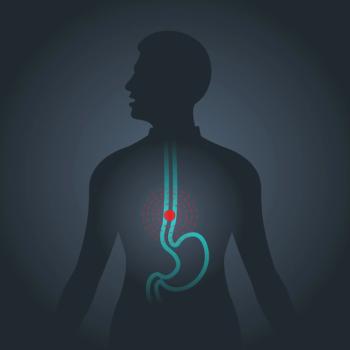
- ONCOLOGY Vol 14 No 1
- Volume 14
- Issue 1
State-Specific Prevalence of Current Cigarette and Cigar Smoking Among Adults-US, 1998
Each year, cigarette smoking causes an estimated 430,000 deaths in the United States. In addition, the health risks for smoking cigars, which include mouth, throat, and lung cancers, are well documented. This report summarizes the findings from the 1998 Behavioral Risk Factor Surveillance System (BRFSS) on the prevalence of current cigarette and cigar smoking in the 50 states and the District of Columbia. The findings indicate that state-specific cigarette smoking prevalence among adults ³ 18 years old varied twofold and having ever smoked a cigar (ie, ever cigar smoking) varied nearly fourfold.
Each year, cigarette smoking causes an estimated 430,000 deaths in the United States. In addition, the health risks for smoking cigars, which include mouth, throat, and lung cancers, are well documented. This report summarizes the findings from the 1998 Behavioral Risk Factor Surveillance System (BRFSS) on the prevalence of current cigarette and cigar smoking in the 50 states and the District of Columbia. The findings indicate that state-specific cigarette smoking prevalence among adults ³ 18 years old varied twofold and having ever smoked a cigar (ie, ever cigar smoking) varied nearly fourfold.
The BRFSS is a state-based, random digit-dialed telephone survey of the civilian, noninstitutionalized US population ³ 18 years old. To determine current cigarette smoking, respondents were asked, Have you ever smoked at least 100 cigarettes in your entire life? and Do you now smoke cigarettes every day, some days, or not at all? Current cigarette smokers were defined as persons who reported having smoked at least 100 cigarettes during their lifetime and who currently smoke every day or some days.
For cigar smoking (ie, large cigars, cigarillos, and small cigars), respondents were asked, Have you ever smoked a cigar, even just a few puffs? and When was the last time you smoked a cigar? Ever cigar smoking was defined as ever having smoked a cigar, even just a few puffs. Past month cigar smoking was defined as smoking a cigar within the previous month. Estimates were weighted to represent the populations of each state. Because BRFSS data are state-specific, median values, rather than a national average, are reported.
Survey Results
During 1998, the median prevalence of current cigarette smoking was 22.9%. State-specific prevalences ranged from 14.2% (Utah) to 30.8% (Kentucky). Range end points were higher for men (15.9% to 36.5%) than for women (12.5% to 28.5%). Median prevalence also was higher for men (25.3%) than for women (21.0%). Current cigarette smoking was highest in Kentucky (30.8%), Nevada (30.4%), West Virginia (27.9%), Michigan (27.4%), and South Dakota (27.3%). Current smoking prevalence was highest for men in South Dakota (36.5%) and for women in Kentucky (28.5%). Current smoking prevalence was lowest for both men (15.9%) and women (12.5%) in Utah.
The median prevalence of ever cigar smoking was 39.0%. State-specific prevalences ranged from 14.8% (Arizona) to 52.0% (Alaska). The median prevalence of past-month cigar smoking was 5.2%. State-specific prevalences ranged from 1.4% (Arizona) to 7.4% (Nevada). Range end points were higher for men than for women for both ever cigar smoking (23.1% to 76.7%, compared with 6.9% to 26.0%) and past month cigar smoking (2.9% to 13.2%, compared with 0.1% to 2.9%).
Median prevalence rates for ever cigar smoking (67.4% compared with 15.8%) and past-month cigar smoking (9.7% compared with 1.3%) also were higher for men than for women. Ever cigar smoking rates were highest in Alaska (52.0%), Wisconsin (49.7%), Nevada (48.6%), Michigan (47.9%), and Oregon (46.7). Ever cigar smoking was highest for men in Wisconsin (76.7%) and for women in Alaska (26.0%). Past-month cigar smoking was highest in Nevada (7.4%), Indiana (7.3%), Illinois (7.1%), Michigan (6.9%), and New Jersey (6.6%). Past-month cigar smoking was highest for men in Indiana (13.2%) and for women in Nevada (2.9%).
Editorial Note from the CDC
In 1996, the prevalence of cigarette smoking was added to the list of nationally notifiable health conditions reported by states to the Centers for Disease Control (CDC). Current cigarette smoking has remained relatively stable during the 1990s in most states. However, smoking has declined significantly in Minnesota since 1997 and increased significantly in South Dakota since 1996. Utah is the only state to have achieved its health objective for the year 2000 to reduce cigarette smoking to a prevalence of no more than 15.0% among persons ³ 18 years old (objective 3.4). The wide variation in current cigarette smoking prevalence across states underscores the potential for prevention and the need for continued efforts aimed at reducing tobacco use.
The findings in this report indicate that cigar smoking prevalences by state vary significantly. Despite the health effects associated with cigar smoking, total cigar consumption in the United States was approximately 5.3 billion cigars in 1998. Overall, cigar consumption in the United States declined during the 1970s and 1980s but began increasing in the 1990s. However, a 1998 report suggests that the recent growth in cigar sales may have slowed.
National surveys have used various questions to ascertain cigar smoking status. This variation, combined with the lack of inclusion of cigar smoking questions on most national surveys after 1992, makes comparison of data among national surveys difficult. Questions about cigar smoking were included on the 1998 National Health Interview Survey and will provide more data on national patterns in adult cigar smoking prevalence.
The findings in this report are subject to at least three limitations. First, the data are based on self-reports without biochemical verification. Second, the lack of standardized questions for cigar use among surveys limits comparisons between state-specific estimates and national estimates. Third, these prevalence estimates are only for adults and do not include persons < 18 years old. However, to assess adequately the impact of cigarette and cigar smoking, data about the prevalence of youth tobacco use also should be considered. Data on youth cigarette and cigar smoking in 1997 are available through the Youth Risk Behavior Survey.
Decreases in tobacco use consistent with national health objectives for 2010 are achievable. Given the large differences in current cigarette and cigar smoking rates among states, future state surveys should continue to monitor cigar smoking among adults and youth, and questions should be standardized across surveys. Such information is important to direct policy changes and develop public health initiatives that address the negative health effects of smoking. Monitoring trends of cigarette smoking and the use of other tobacco products also is essential for evaluating state efforts aimed at reducing tobacco-related morbidity and mortality.
The CDC recommends that states establish tobacco-control programs that are comprehensive, sustainable, and accountable. Guidelines determined by evidence-based analyses of existing comprehensive state tobacco-control programs have been prepared to help states assess options for comprehensive tobacco-control programs and to evaluate local funding priorities. The guidelines provide evidence to support each of nine specific elements of a comprehensive program, including community programs to reduce tobacco use, chronic disease programs to reduce the burden of tobacco-related diseases, school programs, enforcement, statewide programs, countermarketing, cessation programs, surveillance and evaluation, and administration and management.
© 2000 by PRR, Inc. All rights reserved.
Articles in this issue
almost 26 years ago
Raltitrexed Combination Appears Promising in Advanced Colorectal Canceralmost 26 years ago
New Delivery System p53 Gene Holds Promise for Prostate Cancer Treatmentalmost 26 years ago
Interim Results of Trials of Chemotherapy Plus Electric Pulsesalmost 26 years ago
Experimental Compound Targets Molecular Cause of Leukemiaalmost 26 years ago
Changes in Medicare Fees for theYear 2000almost 26 years ago
Are ‘Platins’ on the Way Out in Regimens for NSCLC?almost 26 years ago
Margin Width the Key to Controlling DCIS of the Breastalmost 26 years ago
Endometrial Carcinoma and Precursors: Diagnosis and Treatmentalmost 26 years ago
First Phase II Results of Cisplatin/Epinephrine in Primary Liver CancerNewsletter
Stay up to date on recent advances in the multidisciplinary approach to cancer.



















































































